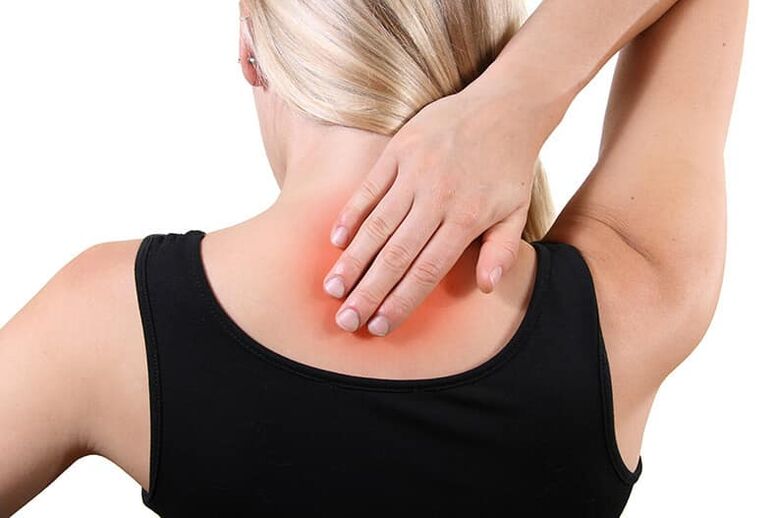Spinal cord disease can be very unpleasant. If they affect the cervical spine, there is a possibility of complications to the spinal cord and brain. Osteochondrosis of the cervical spine often causes headaches, changes in the function of internal organs, and circulatory disorders.
Doctors divide the development of cervical osteochondrosis into three stages. In the first and second stages, degenerative-dystrophic changes in the vertebral disc (drying, flattening) appear. In this case, the structure of the disk itself does not change.

In the early stages, the symptoms of the disease emerge. In the second stage, their manifestations are more specific, while increasing with head movements, fatigue and severe stress. The third stage is the emergence of pathological processes of the vertebral disc (osteophytes), rupture of the fibrous ring is observed, which leads to prolapse of the nucleus of the vertebral disc and, as a consequence, the formation of cervical spine hernias. In the third stage, pain is observed continuously, while head and shoulder movements are difficult to perform, the person is unable to perform standard household operations.
Symptoms
One of the main symptoms of cervical spine osteochondrosis is pain in the back of the neck, which is caused by pinching or inflammation of the nerve roots. In this case, the pain usually radiates to the zones of the neck, shoulders, forearms and under the scapula. The pain can spread to the left or right hand and cause some fingers to become numb.
In addition to pain, cervical osteochondrosis is characterized by:
- dizziness,
- "Flies" in front of the eyes,
- hearing problem
- memory is reduced
- headache with localization in the back of the head and temples.
If the disease lasts for several years, then vascular atherosclerosis and circulatory encephalopathy (serious decrease in mental ability) can be added to it.
With circular head movements, patients with cervical osteochondrosis usually hear special features.
The reasons
The main cause of cervical osteochondrosis is incorrect body position in a sitting position. In addition, when performing daily operations with a forward inclination, during construction and repair work with the head thrown backwards, it is also easy to get symptoms of the disease. This is due to the fact that excessive pressure on the neck can alter the structure of cartilage tissue, which can lead to pathological changes in the intervertebral disc. In addition, the reasons for the development of cervical osteochondrosis can be a violation of calcium metabolism in the body, hereditary factors, trauma, severe hypothermia, and increased sports.
Treatment
It is possible to completely cure and prevent the recurrence of cervical spine osteochondrosis only with lifestyle changes, ongoing prophylaxis and spa treatments. In practice, few people achieve it.
In the first stage of the development of osteochondrosis, patients are usually assisted by conservative non -drug treatment. At the same time, it is necessary to improve posture, pay more attention to proper workplace equipment, and often interrupt simple physiotherapy exercises. Swimming, increased physical activity, and intake of vitamins and mineral complexes can have a positive effect on the entire musculoskeletal system.
If treatment is started in the second or third stage of the disease, its main task is to relieve pain. In further cases, surgical treatment methods can be prescribed to stabilize the damaged vertebrae, but such cases are individual and modern physiotherapy often helps to prevent this.
Physiotherapy methods
In cases where drug therapy is contraindicated or does not show the required positive effect, classical and alternative drug physiotherapy methods are used in the treatment of cervical osteochondrosis. First of all, they aim to relieve muscle cramps, inflammation and pain.
Reflexology.The essence of this method is to stimulate the biologically active point by inserting a special thin needle into it to a certain depth. This procedure is painful and helps relieve pain in the spine. The full reflexology course consists of several sessions.
Sort.The classic method of relieving muscle pain and improving blood flow.
Shock wave therapy (SWT).It is able to restore blood flow and remove osteophytes, restoring the normal structure of cartilage tissue. Positive effects are observed after 1-2 sessions. The course of shock wave therapy is usually up to ten procedures and can be prescribed as part of a complex therapy.
Physiotherapy.A number of specialized daily exercises help strengthen the muscles of the cervical spine, which in turn can reduce stress on this area. Exercise therapy is indicated at all stages of the disease, as well as as a preventive measure. A set of exercises like this includes:
- turn the head to the side;
- head tilted forward and backward;
- shrug;
- flexor bend tension and neck extensor with stationary head position.
Exercises must be repeated 5-7 times. Lesson duration is 15–20 minutes.
The training set is always chosen by the physiotherapist, taking into account the specifics of the disease and the patient’s condition.
Food and lifestyle. Both in the process of conservative treatment and after surgery, it is recommended to eat foods rich in calcium and vitamins, to improve posture and habitual posture in general, orthopedic pillows and mattresses.
prevention
If possible, to avoid hypothermia and infectious diseases, stay long at the computer in one position. If you are traveling long distances, use a cervical support pillow that can reduce muscle tension. For daily sleep, it is recommended to use orthopedic pillows and mattresses that can ensure the correct position of the head.



















